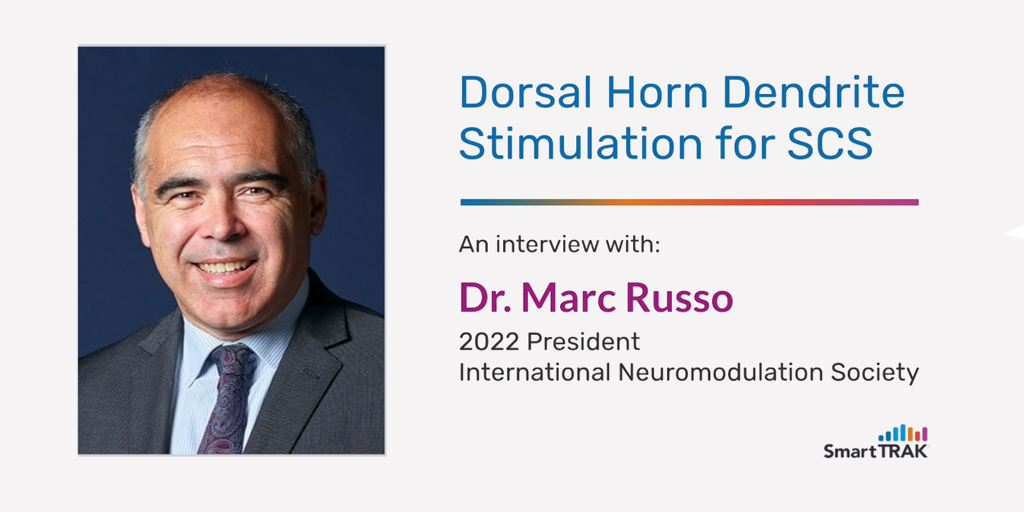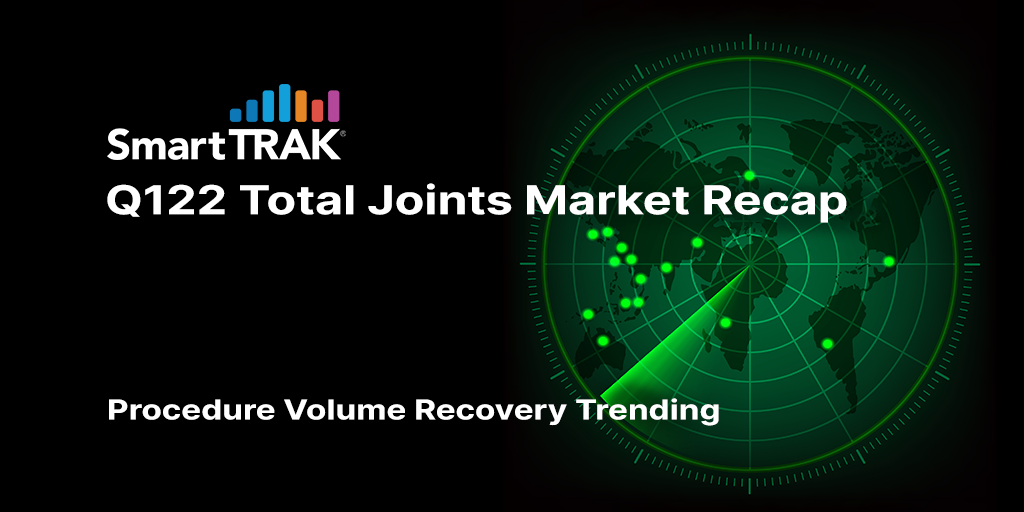 Dr. Marc Russo discusses dorsal horn dendrite stimulation, a new paradigm for SCS, and making it available to all manufacturers in an interview with SmartTRAK at INS 2022
Dr. Marc Russo discusses dorsal horn dendrite stimulation, a new paradigm for SCS, and making it available to all manufacturers in an interview with SmartTRAK at INS 2022
Dr. Marc Russo, president of the International Neuromodulation Society (INS), presented exciting new research on dorsal horn dendrite stimulation (DHDS), a new paradigm for spinal cord stimulation (SCS), at the INS 15th World Congress, held May 21 to 26, 2022 in Barcelona, Spain. In an interview with SmartTRAK, Dr. Russo discusses the proposed mechanism of action for DHDS compared to traditional dorsal column stimulation, six-month study results in 27 patients and what’s next in terms of his research.
And, in an unprecedented move, Dr. Russo decided not to patent DHDS and said he is giving the novel waveform as a “gift” to physicians, industry and patients, noting that it is deployable on all current SCS devices within the product range. To find out more about DHDS, including its characteristics and Dr. Russo’s vision for a more advanced version that could theoretically even “cure pain,” click on the video below of the interview conducted shortly after his presentation outside the Barcelona International Convention Centre (12:02 min). A link to download the complete transcript of the interview is also provided below.
SmartTRAK: Hi Anne Staylor here with BioMedGPS. I'm in beautiful Barcelona, Spain at the INS meeting. And today I'm talking with Mark Russo, the president of the INS.
Marc Russo: Hi, and how are you?
I'm good. How are you?
MR: Very good. Thanks.
Well, you had some exciting presentations just now. Talking about dorsal horn dendrite stimulation, a new paradigm for spinal cord stimulation. Can you talk about some of your findings?
MR: Yes, absolutely, Anne. It's probably worth explaining what that is. For the last 55 years that it's been based on the gate control theory of pain. We've aimed to stimulate the very back of the spinal cord, the dorsal column. We've known that there is circuitry that goes from that to the little mini-computer of the spinal cord, which is the dorsal horn, more off to the left and the right-hand side. And we rely on stimulating axons. They're the long continuous part of the neuro to stimulate axons in the dorsal column to then ultimately affect what's going on inside the little computer. That's been getting better and better, but every five-year period, the improvements are getting smaller and smaller. So it looks as if we're getting close to an end result of how good we might be able to actually get that to work.
So I sat and tried to reimagine the field from scratch. I tried to ask a basic question. ‘What if we did the opposite?’ Would we learn something about anatomy and physiology if we did that? And ‘What is the opposite?’ was the first thing I had to ask myself. So the opposite is not the dorsal column. That would mean therefore going to the dorsal horn itself. And what's the opposite of the axon? It's the other end of the neuron, which is the dendra, which is like these little mini tree branches, little leaves.
If you can imagine a long straight trunk and then just this massive explosion. So we call it a dendritic arbor. Now, the first thing to decide is this a good idea or a bad idea. Probably doing the opposite, you'd think wouldn't do anything. So it turns out that these dendrites are actually really important. They're involved in encoding memory and they're encoding signals, including pain signals. And one of the beautiful things about a dendrite is if you stimulate an axon, it goes and connects to another axon and you get a stimulation down the line one to one ratio.
Nerve to nerve to nerve.
MR: A dendrite, because of its arborization network stimulates 23 axons at once. So- ...
To download the complete transcript of the interview with Dr. Marc Russo, just click the button below. 
SmartTRAK is a comprehensive, easy-to-use, business intelligence solution for the Life Sciences Industry that provides breaking updates on pertinent company news, potential treatments and guidance, international survey results, statistical analysis by country, studies, trial results, financial impact and more. All subscribers receive a Daily Updates email containing the latest need-to-know news curated by our expert analysts. It's the perfect way to start your day! If you would like to learn more about SmartTRAK, just click here.






